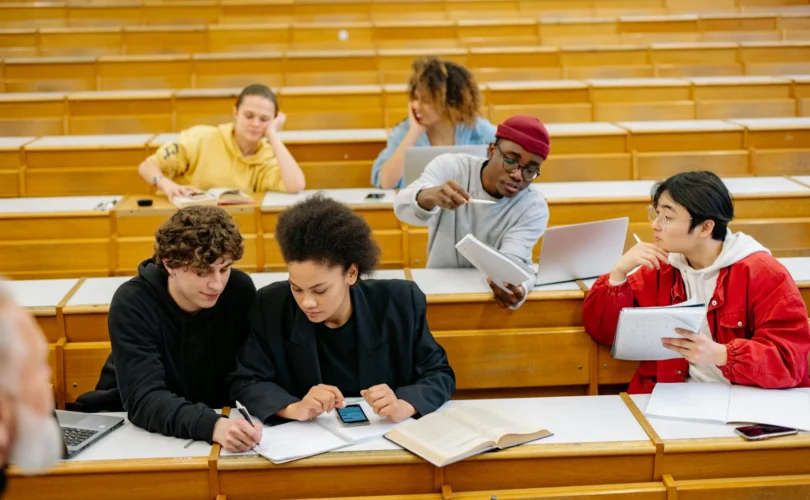-Deva Narayan
Collaborative learning is a teaching method where students work together to achieve a common academic goal. This approach, which is often contrasted to direct instruction emphasizes interaction, cooperation, and mutual engagement of both teacher and student in the task of making meaning. Collaborative learning has become popular among educators globally because it seems to increase student achievement levels due to its strong effects on student motivation and increased verbal confidence among students, especially those who are less outgoing.
One of the main advantages of collaborative learning is that students acquire and retain knowledge more effectively. In group discussions, students are exposed to multiple ways of understanding and explaining things. This exposure helps them frame more complete answers, which are often easier to understand as well. Similarly, when students teach concepts to each other or reinforce each other’s answers during discussions, they develop their mastery of a subject. Research has found that students who engage in collaborative learning score higher grades, and remember information for longer periods than their peers who stick to self-studying.
Development of Critical Thinking Skills
Collaborative learning develops critical thinking skills. In a group, students are encouraged to question assumptions, analyze information, and evaluate the solutions proposed by others. This promotes high-level thinking because students must justify their reasoning and consider alternative perspectives on the problem or solution(s). Collaborative learning helps students think more critically when faced with complex real-world problems.
Improved Communication and Interpersonal Skills
Effective communication is a fundamental building block for collaborative learning. Students have to articulate their ideas clearly, listen carefully to others, disagree respectfully when they hold different opinions and synthesize various points of view. Through these processes, students acquire important communication and interpersonal skills that are useful both in the classroom and beyond. Collaborative learning also fosters an appreciation for the value of working in teams and the rewards associated with collective achievement – skills that are crucially important in a world characterized by globalization and interdependence.
Increased Motivation and Engagement
Collaborative learning has been proven to increase student motivation and engagement. When students work in groups, they share a sense of community and belonging that often enhances their motivation to stay engaged with the learning material. The inherently social nature of many collaborative activities also makes learning more enjoyable by reducing the isolation that can be associated with studying online. Moreover, the fact that you are accountable to your peers can often motivate you to put forth your best effort, as you don’t want to let them down and you know that your success is tied to the success of your group.
Development of Social and Emotional Skills
Collaborative learning also helps in developing social and emotional skills. Students are required to work in groups where they need to deal with conflicts, differences of opinion, and people from different backgrounds. This helps them to understand others, have patience with others’ mistakes, and be resilient. Collaborative learning gives a chance for many students to come forward and develop leadership qualities as these students get an opportunity to discuss in groups, plan activities, or help peers.
Collaborative learning is a powerful approach that significantly impacts student success. By enhancing understanding and retention, developing critical thinking and communication skills, increasing motivation and engagement, and preparing students for the workforce, collaborative learning offers a comprehensive educational experience. Despite its challenges, the benefits of collaborative learning make it a valuable addition to any educational program. As educators continue to explore and refine collaborative learning strategies, students will be better equipped to thrive in an increasingly complex and collaborative world.

